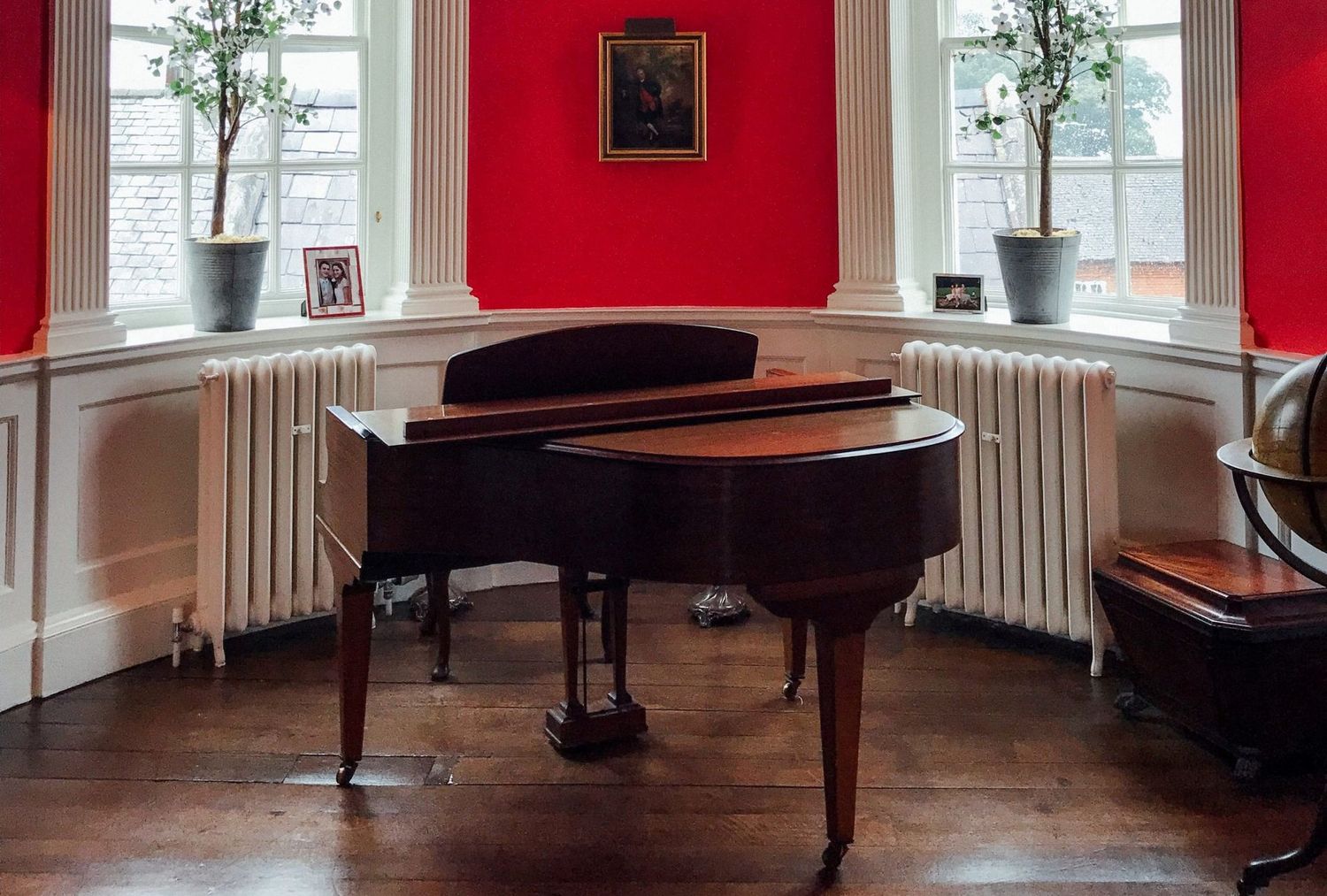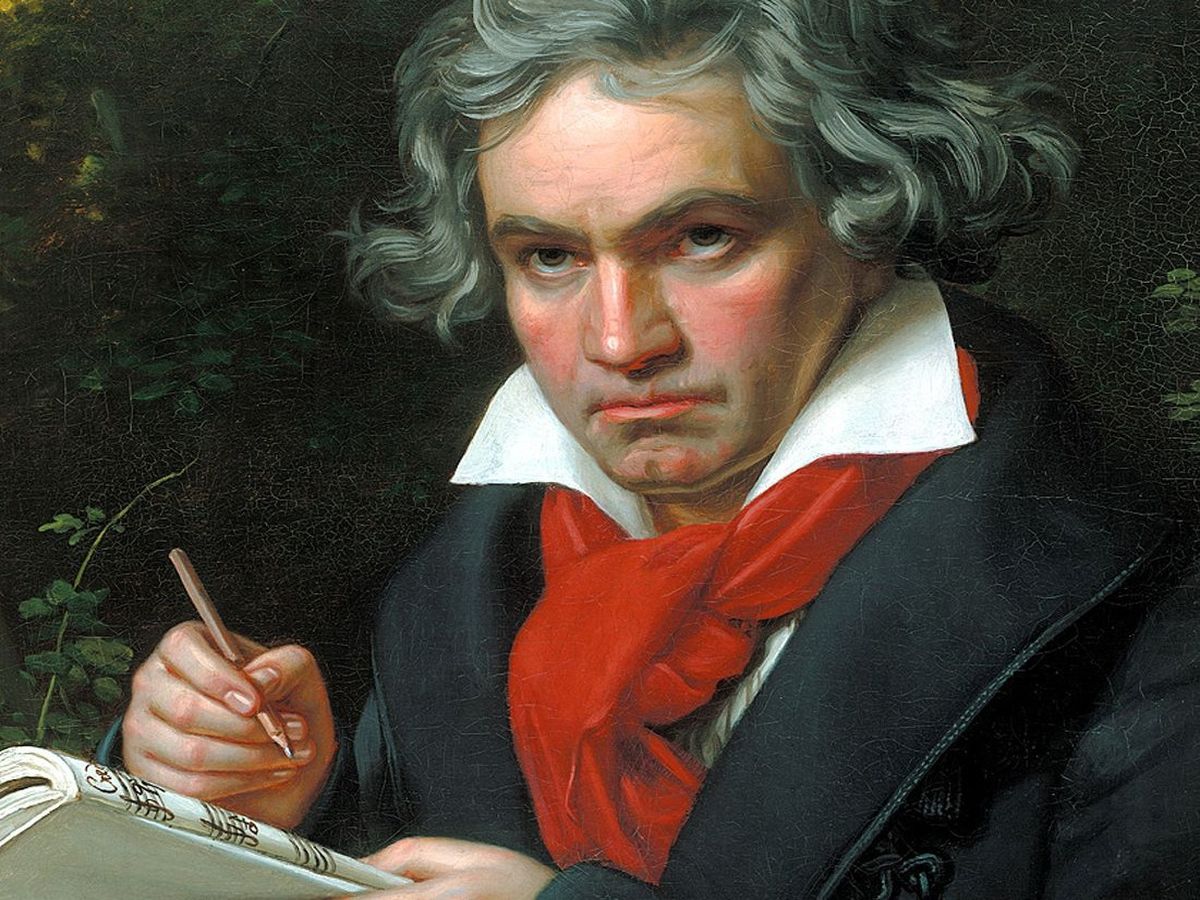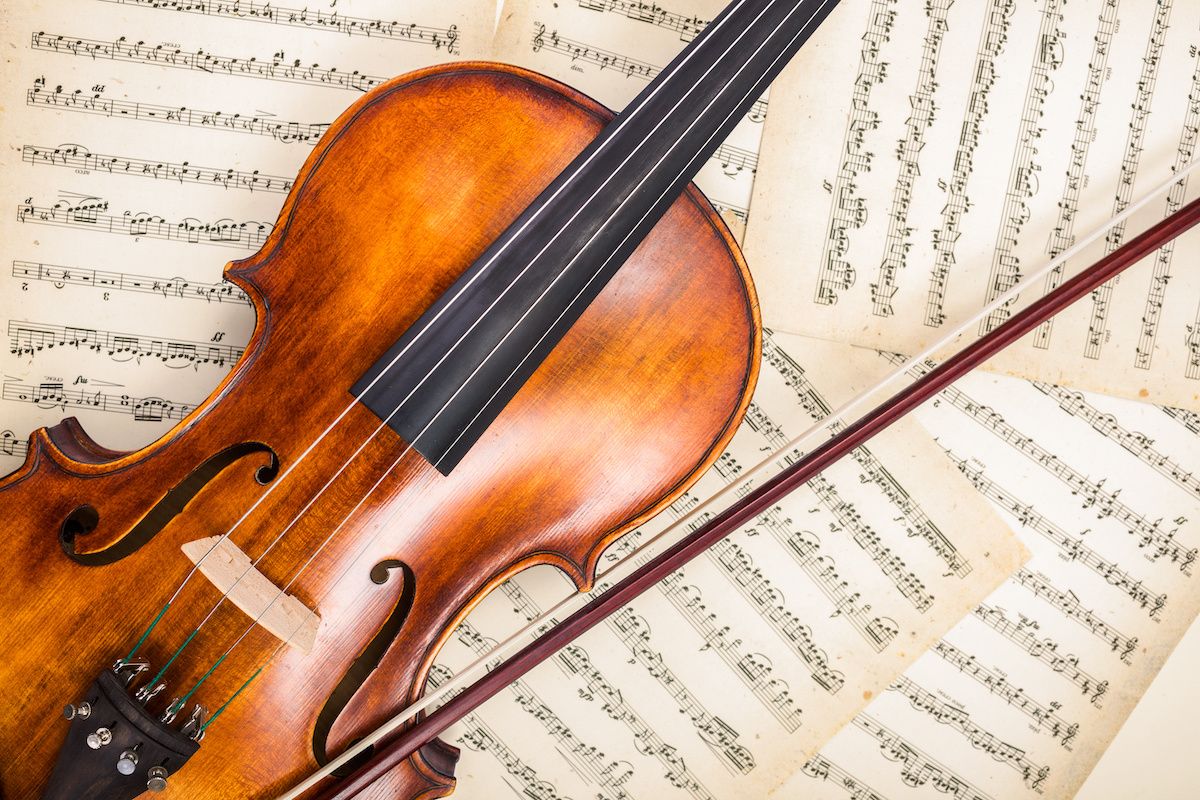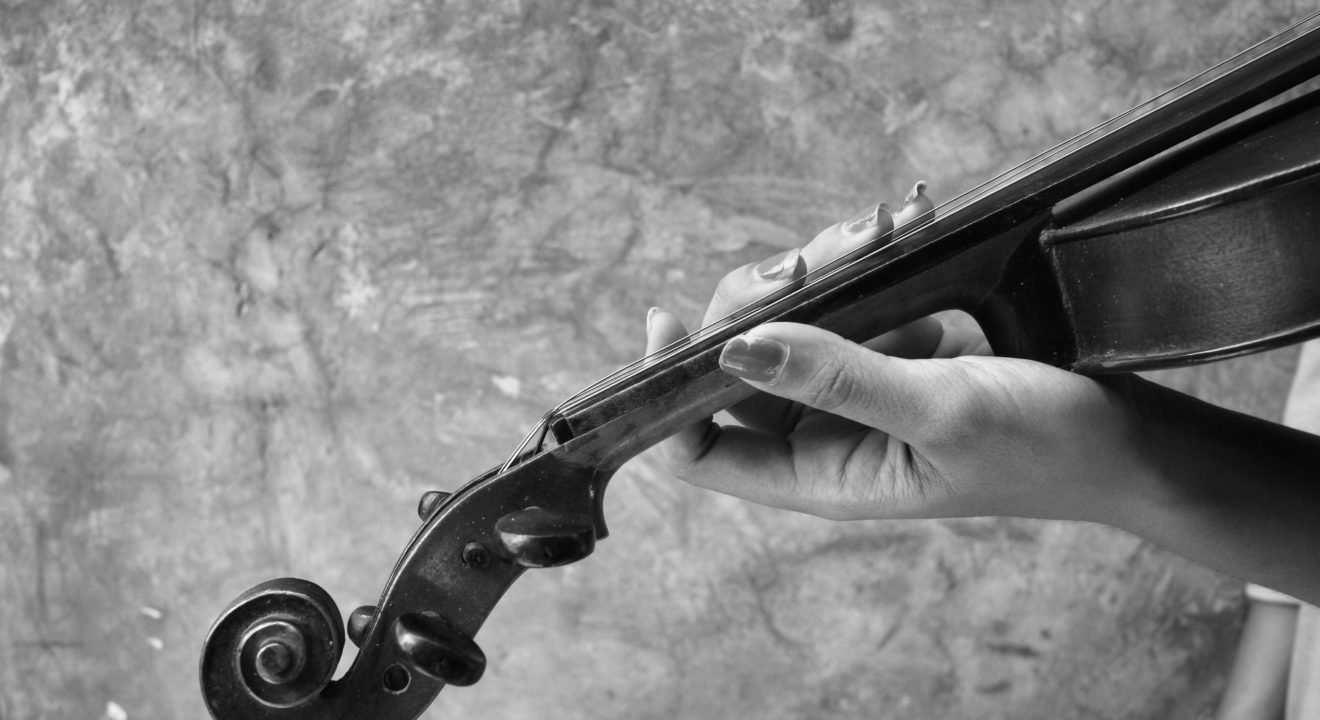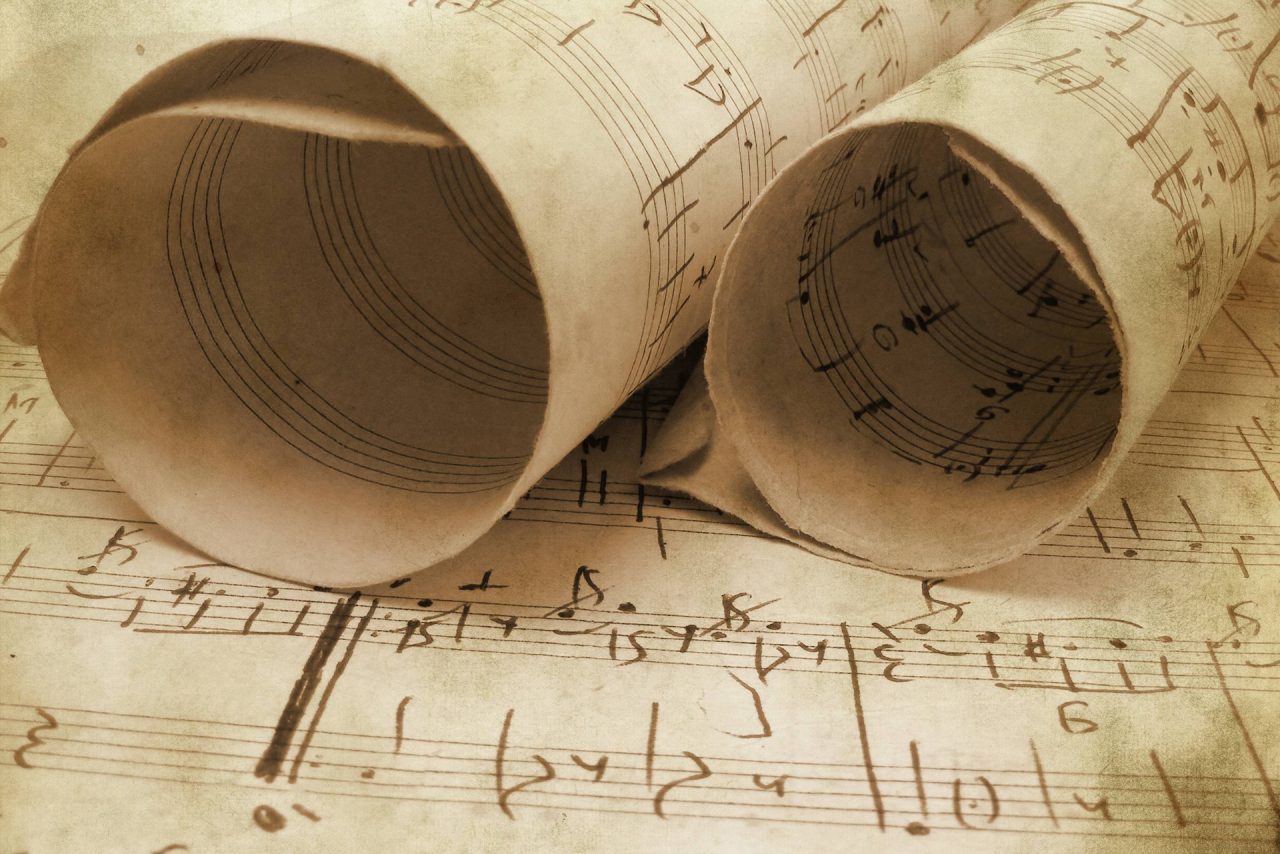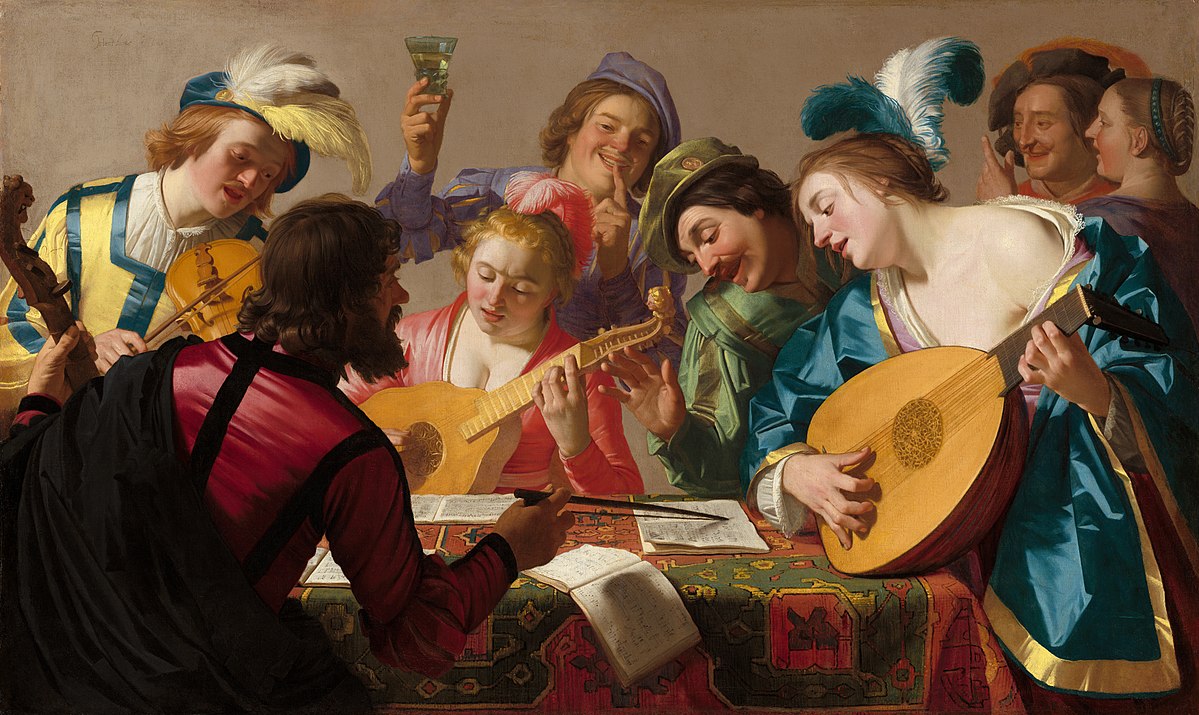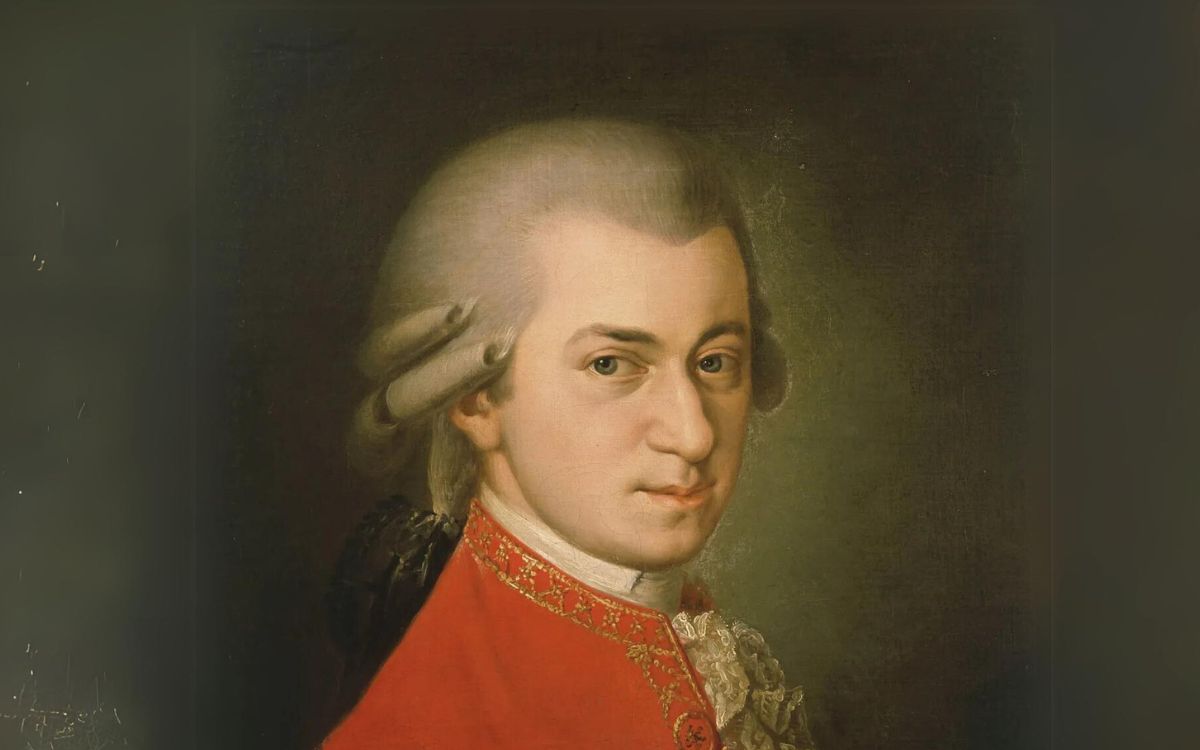Home>Events & Info>Music History>During Which Period Of Music History Did G. P. Da Palestrina Live?
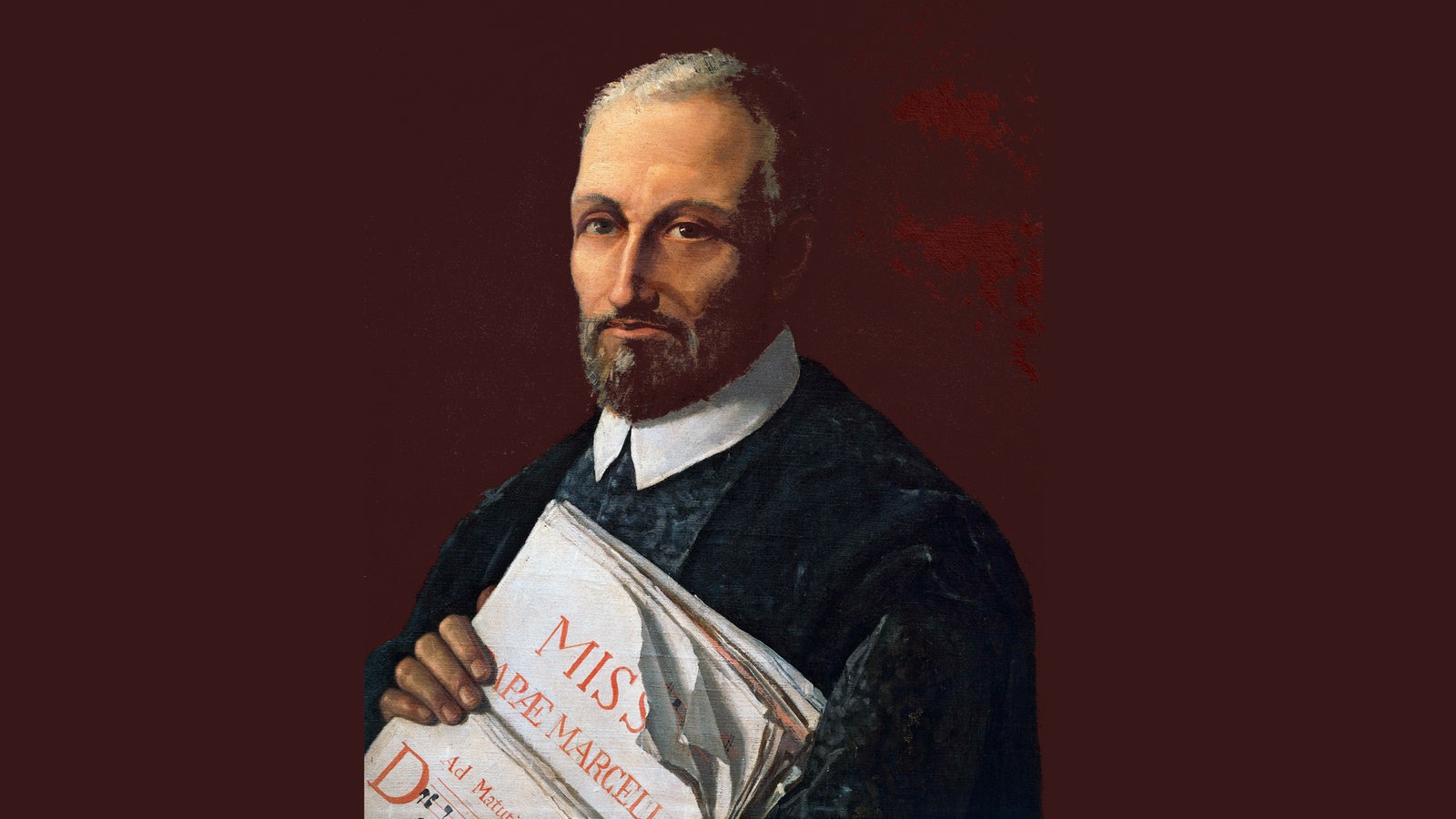

Music History
During Which Period Of Music History Did G. P. Da Palestrina Live?
Modified: January 28, 2024
Learn about the life and times of G. P. Da Palestrina, a notable composer who lived during a significant period in music history.
(Many of the links in this article redirect to a specific reviewed product. Your purchase of these products through affiliate links helps to generate commission for AudioLover.com, at no extra cost. Learn more)
Table of Contents
Introduction
Music history is a fascinating subject that takes us on a journey through the evolution of musical styles, composers, and influential periods in time. One such significant period is the Renaissance, a time of great cultural and artistic flourishing. Within this rich tapestry of musical history, Giovanni Pierluigi da Palestrina emerges as one of the most notable composers of his time.
Giovanni Pierluigi da Palestrina, commonly known as Palestrina, was an Italian composer, choirmaster, and teacher who lived during the Renaissance period. Born in 1525 or 1526 in Palestrina, Italy, little is known about his early life and upbringing, adding an air of mystery to his musical genius.
Palestrina’s contributions to music were significant, spanning both sacred and secular compositions. His works showcased the beauty and intricate harmonies of vocal polyphony, and he is often credited with perfecting the musical style known as the Palestrina-style or the “a cappella” style.
Throughout his illustrious career, Palestrina composed over 104 masses, 300 motets, and numerous madrigals. His works were revered for their balance, clarity, and expressive melodies, setting him apart as a master of polyphonic music.
The Renaissance period, during which Palestrina thrived, was a time of great artistic and intellectual revitalization. It spanned from the 14th to the 17th century, marking a transition from the medieval period to the modern era. This period saw a renewed focus on humanism, scientific exploration, and cultural rebirth.
As we dive deeper into the life and works of G. P. da Palestrina, we will explore the influence of the Renaissance period on his compositions, his role in shaping the musical landscape of the time, and the lasting legacy he left behind for future generations of musicians and music lovers.
Early Life of G. P. da Palestrina
Although little is known about his early life, Giovanni Pierluigi da Palestrina was born in 1525 or 1526 in the town of Palestrina, located near Rome, Italy. The exact details of his family background and upbringing remain a mystery, but it is believed that he came from a musical household.
As a young boy, Palestrina showed a natural inclination and talent for music. Recognizing his prodigious abilities, his family likely encouraged his musical pursuits, providing him with the necessary education and training. It is speculated that Palestrina received his early musical education in Palestrina and later studied in Rome, a city renowned for its thriving arts and culture scene.
During this time, Palestrina would have been exposed to the vibrant music scene in Rome, where he would have encountered the works of renowned composers, such as Josquin des Prez and Giovanni Maria Nanino. This exposure to the rich musical traditions of the time would have a lasting impact on his own compositions.
The details of Palestrina’s childhood and early musical development are scarce, but it is clear that his passion for music propelled him forward. His extraordinary talent soon caught the attention of influential patrons, leading to opportunities for further education and growth as a composer.
While the specifics of his musical education and mentors remain unclear, it is likely that Palestrina received training in music theory, composition, and performance from esteemed musicians of the time. This foundation would lay the groundwork for his later masterpieces and establish him as one of the foremost composers of the Renaissance period.
Despite the lack of detailed information about his upbringing, Palestrina’s early life serves as a testament to his innate talent and the influence of his formative years. It is within this context that we can begin to explore the remarkable musical journey that this enigmatic composer would embark upon, leaving an indelible mark on the history of music.
Musical Training and Influences
Though the details of Giovanni Pierluigi da Palestrina’s early musical education are not well-documented, his exceptional talent and musical prowess suggest a thorough training in the art of composition and performance. His works demonstrate a deep understanding of music theory and a mastery of polyphonic techniques.
As Palestrina grew into adulthood, he likely sought further education and mentorship from prominent musicians and composers of the time. The city of Rome, where Palestrina spent a significant portion of his life, served as a hub for musical innovation and creativity. It was in this vibrant environment that Palestrina would have encountered influential figures who shaped his musical development.
One influential musician who had a profound impact on Palestrina’s compositions was Josquin des Prez, a renowned Franco-Flemish composer. Josquin was widely regarded as one of the greatest composers of the Renaissance period, and his works exemplified the polyphonic style that would come to define Palestrina’s own compositions.
In addition to Josquin des Prez, Palestrina’s compositions were also influenced by the works of other contemporary composers such as Giovanni Maria Nanino, Orlando di Lasso, and Jacobus Arcadelt. These composers, along with their distinct styles and techniques, inspired and informed Palestrina’s own approach to composition.
One of the key influences on Palestrina’s musical style was the Council of Trent, a series of meetings held by the Catholic Church in the 16th century to address issues within the Church, including concerns about the music used in religious services. The Council called for a simplification of sacred music, with a focus on clarity of text and a reduction of complex polyphony.
Palestrina, being a devout Catholic, embraced the challenge posed by the Council of Trent and set out to create musical compositions that met the criteria outlined by the Church. His compositions became exemplars of the Palestrina-style, characterized by clear and intelligible text settings, balanced part-writing, and a reverence for the sacred texts.
By combining the influence of his contemporaries, the teachings of the Council of Trent, and his own creative genius, Palestrina developed a unique style that resonated with listeners and would go on to shape the course of Renaissance music. His compositions, particularly his masses and motets, became models of musical excellence and were highly regarded by music lovers and scholars alike.
Next, we will delve into some of Palestrina’s most noteworthy compositions and explore how they contributed to his reputation as one of the greatest composers of the Renaissance period.
Palestrina’s Compositions
Giovanni Pierluigi da Palestrina is best known for his extensive body of compositions, which encompass a wide range of musical genres. His works include over 104 masses, 300 motets, numerous madrigals, and other secular vocal pieces.
One of Palestrina’s most significant contributions to music was his mastery of the polyphonic style, demonstrated in his masses. His masses are considered some of the greatest compositions in the history of Western classical music. They reveal a keen sense of harmonic balance, intricate counterpoint, and expressive melodies.
Palestrina’s compositions, whether sacred or secular, were renowned for their beautiful harmonies and smooth melodic lines. His choral works, in particular, showcased his skill in crafting intricate interplay between vocal parts, creating a sumptuous tapestry of sound.
Among his notable compositions, the “Missa Papae Marcelli” (Mass for Pope Marcellus) stands out as a masterpiece. This mass is often cited as an example of Palestrina’s ability to create music that aligned with the desires of the Council of Trent while maintaining a high level of artistic integrity. Its clear text setting and balanced polyphony exemplify Palestrina’s style.
Another influential composition by Palestrina is his collection of motets, which were widely performed and admired during his time. Motets such as “Sicut Cervus” and “Exsultate Deo” showcase his remarkable ability to weave intricate vocal lines together, resulting in a rich, harmonious blend.
In addition to his religious compositions, Palestrina also excelled in secular genres. His madrigals, a popular form of secular vocal music during the Renaissance, showcased his versatility as a composer. These compositions often featured expressive texts, engaging melodies, and vibrant choral textures.
While Palestrina’s religious works dominated his output, his secular compositions provided a glimpse into his range as a composer and his ability to evoke emotion and capture the essence of the texts he set to music. They reflected the secular musical trends of the time and further established Palestrina as a masterful composer.
Palestrina’s compositions continue to be celebrated and performed today, captivating audiences with their timeless beauty and musical complexity. His ability to bridge the sacred and secular worlds, combined with his exceptional craftsmanship, solidified his place as one of the most significant composers in music history.
Now that we have explored Palestrina’s notable works, let us dive into the historical and cultural context of the Renaissance period, and the impact he had on the musical landscape of his time.
The Renaissance Period in Music History
The Renaissance period, spanning approximately from the 14th to the 17th century, was characterized by a cultural and intellectual rebirth in Europe. It was a time of great transformation and innovation in various artistic disciplines, including music.
The Renaissance marked a departure from the medieval era, with a renewed focus on humanism, scientific exploration, and advancements in the arts. This shift in mindset influenced the development of music, leading to the emergence of new musical styles and techniques.
During the Renaissance, music played a central role in both religious and secular contexts. The Catholic Church continued to hold significant influence over the musical landscape, commissioning numerous sacred works for liturgical purposes.
A significant characteristic of Renaissance music was its emphasis on vocal polyphony. Composers sought to create harmonically rich and expressive music, often employing intricate counterpoint and multiple independent vocal parts. This resulted in a more complex and textured musical texture.
The rise of humanistic ideals during the Renaissance also influenced the content and structure of musical compositions. Composers began to focus on setting texts with clarity and intelligibility, allowing the words themselves to take center stage. This led to a renewed interest in the ancient Greek notion of “musica reservata,” where the music was tailored to enhance the meaning and emotional impact of the text.
The development of music printing and the spread of musical manuscripts allowed for a wider dissemination of musical works. This facilitated the exchange of ideas and the exploration of new musical styles across different regions in Europe.
Notable composers of the Renaissance period, in addition to Palestrina, include Josquin des Prez, Orlando di Lasso, Thomas Tallis, and William Byrd. Each composer brought their unique contributions to the musical landscape, experimenting with new forms, expanding the harmonic language, and pushing the boundaries of musical expression.
The Renaissance period laid the foundation for the future development of music, influencing subsequent musical styles and movements. The spirit of artistic and intellectual exploration that characterized this era continues to inspire musicians and scholars to this day.
Now, let us explore Palestrina’s role in shaping Renaissance music and his significant contributions to the musical landscape of his time.
Palestrina’s Role in Renaissance Music
Giovanni Pierluigi da Palestrina holds a pivotal role in the development of Renaissance music. His contributions as a composer, teacher, and ambassador of the Palestrina-style elevated him to legendary status within the musical community of his time.
Palestrina’s role in Renaissance music can be best understood within the context of the musical and cultural climate of his era. As the Renaissance period flourished, so did the demand for sophisticated and expressive musical compositions, particularly in the realm of sacred music.
One of Palestrina’s most significant achievements was his ability to meet the demands set forth by the Council of Trent regarding the clarity of sacred texts in liturgical music. The Council’s decree called for a simplification of polyphony in order to enhance the intelligibility of the sung words during religious services.
Palestrina’s compositions showcased his extraordinary craftsmanship and sensitivity to the newly established guidelines. He carefully crafted his musical settings to highlight the beauty and meaning of the texts, while maintaining a rich and emotional musical experience.
His masterpiece, the “Missa Papae Marcelli,” is often cited as an exemplar of this approach. The composition’s elegant and balanced polyphony, coupled with its clear text setting, perfectly captured the intentions set forth by the Council of Trent.
Palestrina’s reputation as a composer extended beyond his sacred works. He was also highly regarded for his contributions to secular music, particularly his madrigals. His skillful use of the Italian language and his ability to infuse the text with emotion made his madrigals popular during his time.
As a renowned teacher, Palestrina left an indelible impact on the next generation of composers. His students, who studied under his tutelage in Rome, went on to become influential composers themselves, spreading the Palestrina-style throughout Europe.
By embracing the ideals of the Renaissance, Palestrina’s compositions embodied the spirit of humanism and artistic expression. His works showcased the potential of music to evoke emotions and convey meaning, blending technical mastery with a deep reverence for the texts he set to music.
Today, Palestrina’s legacy continues to be felt in the world of classical music. His compositions remain a cornerstone of choral repertoire, and his influence can be seen in the works of countless composers who have followed in his footsteps.
As we reflect on the contributions of Palestrina, we recognize his pivotal role in shaping Renaissance music and his enduring impact on the wider musical landscape. His ability to navigate the musical and cultural challenges of his time while leaving a lasting musical legacy solidifies his position as one of the greatest composers in history.
Legacy and Impact of G. P. da Palestrina
Giovanni Pierluigi da Palestrina’s legacy as a composer is far-reaching and has had a profound impact on the world of music. His contributions to Renaissance music, particularly in the realm of sacred compositions, continue to resonate with audiences and musicians alike.
Palestrina’s mastery of polyphonic vocal music and his ability to balance complex harmonies with clear text settings set him apart as one of the most accomplished composers of his time. His compositions, characterized by their beauty, elegance, and emotional depth, solidified his place in music history.
One of Palestrina’s enduring legacies is his role in shaping the development of choral music. His compositions, such as his masses and motets, continue to be performed and celebrated by choirs around the world. Through his artistry, he elevated the genre of choral music, showcasing its potential for intricate harmonies and profound expression.
Palestrina’s commitment to the craft of composition and his adherence to the principles set forth by the Council of Trent influenced generations of composers. His works served as a model for aspiring composers, guiding them in the creation of sacred music that met the standards of the Church while maintaining artistic excellence.
Furthermore, Palestrina’s teaching methods and mentorship left a lasting impact on his students, many of whom went on to become influential composers themselves. His pedagogical approach emphasized the importance of craftsmanship, clarity in text setting, and sensitivity to the emotional nuances of the composition. These principles influenced the musical output of his students, spreading the Palestrina-style and influencing the broader musical landscape of the time.
Beyond his immediate sphere of influence, Palestrina’s works had a lasting impact on subsequent musical periods. His compositions served as a bridge between the polyphonic style of the Renaissance and the contrapuntal complexities of the Baroque era. The Palestrina-style became a touchstone for composers seeking to achieve balance and beauty in their works.
Even today, Palestrina’s compositions continue to inspire composers and musicians. His music remains an important part of the choral repertoire, and his influence can be heard in the works of contemporary composers who draw inspiration from his harmonies, melodies, and structural techniques.
Giovanni Pierluigi da Palestrina’s legacy as one of the greatest composers in music history is apparent not only in the sheer beauty and emotional depth of his compositions but also in the enduring impact he had on the development of choral music and the wider musical landscape of his time. His contributions continue to shape the world of music, reminding us of the timeless power of artistic expression.
Conclusion
Giovanni Pierluigi da Palestrina stands as a towering figure in music history, particularly within the context of the Renaissance period. His remarkable compositions, spanning sacred and secular genres, showcased his mastery of polyphony and his ability to create music that resonated with listeners on an emotional level.
Through his adherence to the principles set forth by the Council of Trent and his unwavering commitment to craftsmanship, Palestrina left an indelible mark not only on the development of Renaissance music but also on the broader musical landscape that followed.
Palestrina’s compositions, with their beauty, clarity, and expressive power, continue to captivate audiences and serve as a source of inspiration for composers and musicians across generations. His works remain an integral part of the choral repertoire, testament to his enduring impact on the genre.
As a teacher, Palestrina influenced a new generation of composers, guiding them in the pursuit of musical excellence and emphasizing the importance of clear text setting and emotional depth in their compositions.
The legacy of Giovanni Pierluigi da Palestrina extends far beyond his own lifetime. His contributions as a composer, his role in shaping Renaissance music, and his lasting influence on subsequent musical periods solidify his status as one of the greatest composers in history.
In the realm of music history, Palestrina’s name shines brightly as a beacon of artistic brilliance and innovation. His artistry continues to awe and inspire, reminding us of the timeless power of music to uplift the human spirit and transcend the boundaries of time and place.
As we listen to the celestial melodies and intricate harmonies of Palestrina’s compositions, we are transported to an era of artistic splendor and cultural evolution. We honor his legacy by recognizing the profound impact he had on music history and by cherishing the magnificence of his musical creations for generations to come.

